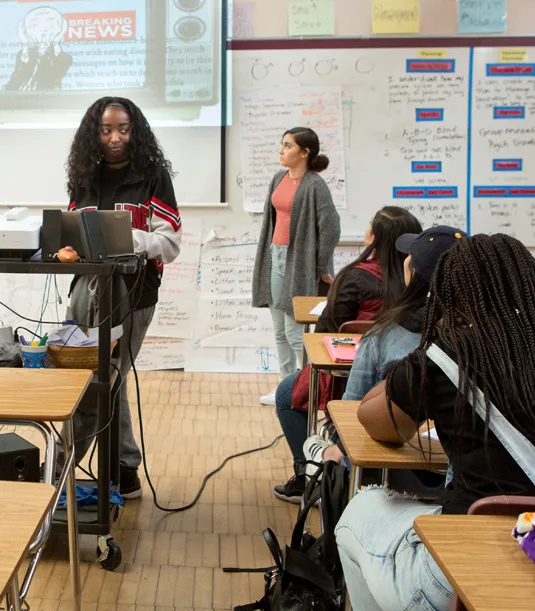New Federal Perkins Act Strengthens College Transition in Career and Technical Education
Increased Emphasis on College in High School Programs in Pathways to Postsecondary Credentials and Degrees
August 29, 2018, Chapel Hill, NC -The recently-enacted Strengthening Career and Technical Education for the 21st Century Act, which reauthorizes the Carl D. Perkins Career and Technical Education Act(Perkins Act) will enhance federal support for college in high school programs as critical pathways for postsecondary attainment in high-value career fields. Schools around the country have demonstrated that dual and concurrent enrollment courses can close the skills gap by propelling students to successfully earn high-valuable portable college credentials and degrees. Numerous Congressional offices drafting the Act successfully advocated for provisions supporting college in high school programs as allowable uses of Perkins funds at the local, state, and national levels, as elements of state and local plans, and as an optional indicator on state accountability systems.
Montana Governor Steve Bullock remarked "Greater federal support for dual and concurrent enrollment in Perkins V will allow us to expand this high-impact approach to ensure equity of opportunity for all Montana students. Montana has aligned our dual enrollment and career pathways programs with the workforce needs of businesses large and small in Big Sky Country, increasing access for Montana students to coursework in high-skill, high-demand sectors such as computing, healthcare, and advanced manufacturing."
Amy Williams, Dual Enrollment and Montana Career Pathways Program Director at the Montana Office of the Commissioner of Higher Education further elaborated, “Here in Montana we have strategically grown CTE concurrent enrollment aligned with state labor-market needs over the past three years from 29% to 45% of our annual courses across our vast state." Williams, who serves as the and Chair of the National Alliance of Concurrent Enrollment Partnerships (NACEP)State Policy Leadership Committee, noted in particular Montana's success in expanding programs "in schools large and very, very small."
The major provisions of the Perkins Reauthorization that support college in high school programs, including dual and concurrent enrollment and early college high school, are as follows:
Allowable Use of Funds
- Local Use of Funds: Includes college in high school programs as allowable uses of local funds, and also has a provision that asks recipients to use funds to reduce out of pocket costs for special populations (low income students, students with disabilities, English language learners etc.)
- State Leadership Activities:Allows states to use funds to establish, expand, and integrate opportunities for students to participate in college in high school programs at no cost to them or their families.
- National Activities: Authorizes research grants for innovative methods of delivering high-quality CTE programs of study, including dual and concurrent enrollment programs, and includes the expansion of college in high school as allowable uses of funds for a new Innovation and Modernization grant program.
Additional Supportive Provisions
- State Plan:Requires states to discuss in their State Plans how they will make opportunities available for students to engage in college in high school programs, and make information about those programs available to students.
- Local Application:Requires the local recipients to include in their application to the state how they will use funds to develop and implement college in high school programs.
- Accountability:Makes the percentage of students graduating high school with post-secondary credits earned through college in high school programs an optional indicator for State Plans.
- Definitions:Adds dual or concurrent enrollment and early college high school programs to the definition of career and technical education, and aligns those definitions with the Every Student Succeeds Act (ESSA).
Alex Perry, the Coordinator of the College in High School Alliance stated, "We are grateful for Congressional recognition that college in high school programs are core strategies integral to high-quality career and technical education programs. Through this bill, school districts and institutions of higher education will have the flexibility to increase availability of these successful models to help students transition from secondary into postsecondary study, and ultimately into a prosperous career.
Parents and students participating in high school technical programs place high value on their ability to earn college credits, according to research from the Association for Career and Technical Education and Advance CTE. This postsecondary connection elevates career-preparation programs to an equal footing with core high school academic subjects. Dual and concurrent enrollment courses are typically the keystone courses in career pathways and a significant feature of career academies and CTE-focused early college high schools.
The members of the College in High School Alliance will work with states and local education institutions to enhance the college transition strategies of their Career and Technical Education programs as the Act is implemented."
###


Leave a Reply
You must be logged in to post a comment.